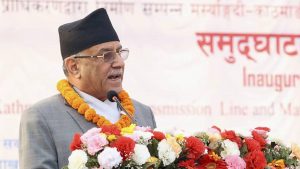
The Booming Flower Business in Nepal

Priya Sharma, a seasoned floriculturist with over 13 years of experience, has witnessed a substantial surge in the demand for flowers during the Diwali festival.
Sharma, who hails from Gorkha district, voiced her thoughts on the evolving market. “The demand for flowers usually wanes during the peak production season. It’s high time the government explores the possibility of establishing a dedicated marketplace for flower traders,” she recommended. “Nepal boasts immense potential in the floriculture sector, including the prospect of flower exports. However, our progress has been hindered by the limited technological resources within the country.”
Multiple floriculture entrepreneurs, akin to Sharma, are currently participating in the Diwali Flower Expo, which commenced at the Bhrikuti Mandap Exhibition Hall on Tuesday.
Priya Sharma, along with her entire family, actively participates in the flower business. She has even expanded her workforce by hiring two more individuals to meet the rising demand.
Avinash Chhetri, the marketing manager of Blossom Nursery, asserted that Nepal is self-reliant in producing flowers. Chhetri underlined the untapped potential of the floriculture sector and its inability to fully satisfy market demand. “It’s a common misconception that flowers are sought after solely during Diwali, but the reality is that flowers enjoy year-round demand,” he remarked. “Nepal has the capacity to produce its floral requirements, but the government has yet to reduce the need for imports. Furthermore, some traders are actively exporting flowers.”
Chhetri anticipates substantial sales of approximately Rs 1 million during the expo, and Blossom Nursery has been instrumental in providing employment opportunities to three people.
Shristi Rana was engrossed in selecting ornate flowers at the expo. “I had no idea that Nepal excels in floriculture to this extent. Instead of opting for imported flowers, we should prioritize locally grown blooms. We require flowers throughout the year, not just during Diwali,” she emphasized.
Suresh Pradhan, president of the Nursery Entrepreneurs Association of Nepal, emphasized that local production can satisfy up to 90% of the market demand. “Imports fill the gap. The demand for marigolds sees a significant uptick during the three festival days, but the rest of the year doesn’t witness the same demand,” Pradhan added.
Suresh Pradhan also stressed the need to import flowers for meeting the festive demands in urban areas. “Rural markets are self-sufficient, and we can potentially eliminate imports altogether by facilitating the transportation of flowers from rural to urban markets,” he suggested.
In Nepal, flower cultivation spans across 2,021 hectares in 48 different districts. The country boasts over 1,000 commercial flower farmers, providing direct or indirect employment to 44,000 individuals.
The expo features a breathtaking array of over 100 distinct flower varieties, showcasing Nepal’s rich floricultural diversity.














Comments